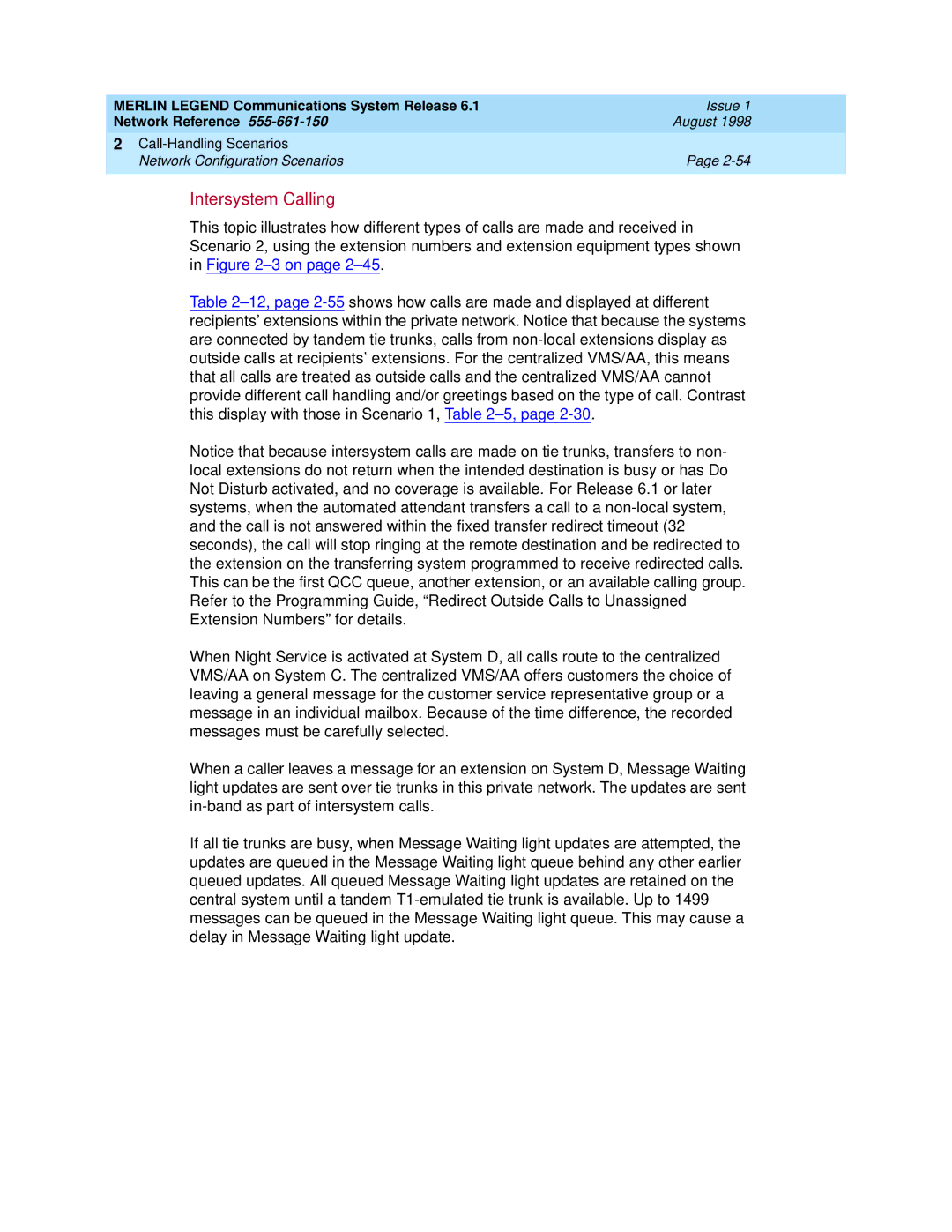MERLIN LEGEND Communications System Release 6.1 | Issue 1 |
Network Reference | August 1998 |
2 |
|
Network Configuration Scenarios | Page |
|
|
Intersystem Calling
This topic illustrates how different types of calls are made and received in Scenario 2, using the extension numbers and extension equipment types shown in Figure
Table
Notice that because intersystem calls are made on tie trunks, transfers to non- local extensions do not return when the intended destination is busy or has Do Not Disturb activated, and no coverage is available. For Release 6.1 or later systems, when the automated attendant transfers a call to a
When Night Service is activated at System D, all calls route to the centralized VMS/AA on System C. The centralized VMS/AA offers customers the choice of leaving a general message for the customer service representative group or a message in an individual mailbox. Because of the time difference, the recorded messages must be carefully selected.
When a caller leaves a message for an extension on System D, Message Waiting light updates are sent over tie trunks in this private network. The updates are sent
If all tie trunks are busy, when Message Waiting light updates are attempted, the updates are queued in the Message Waiting light queue behind any other earlier queued updates. All queued Message Waiting light updates are retained on the central system until a tandem
